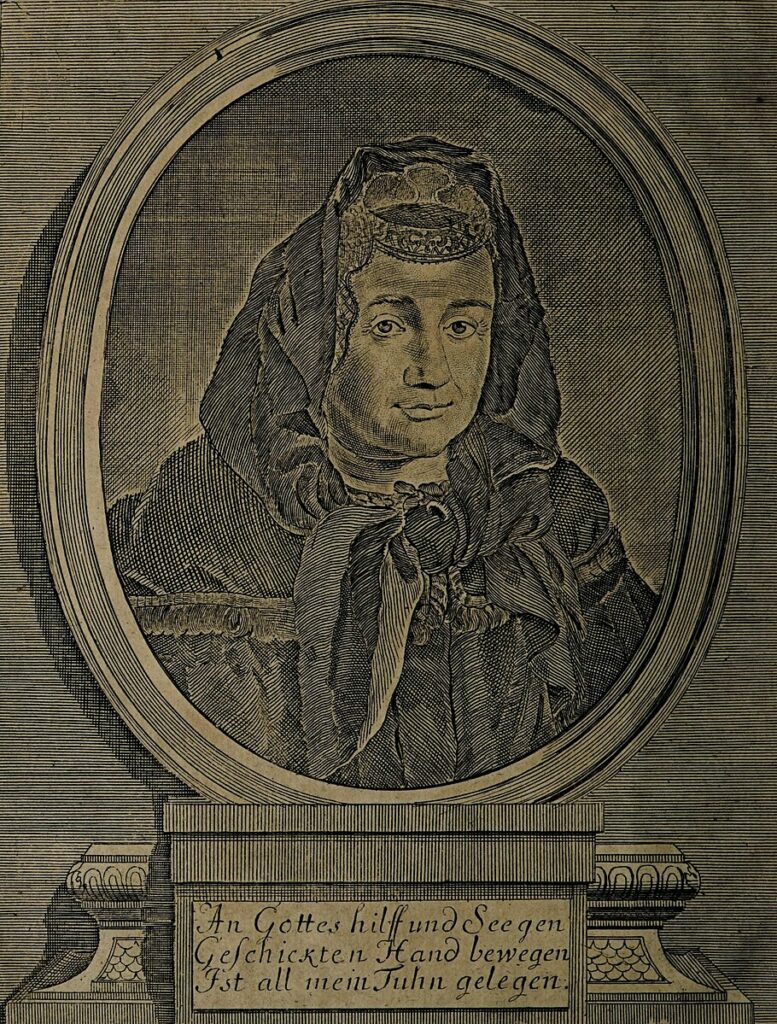There was a time when only men could receive formal education, even in matters like obstetrics and gynecology.
Though women had more firsthand experience in childbirth, the male perspective always prevailed. However, that changed when Justine Siegemund proved herself in the field of midwifery and became an irrefutable authority on the subject.
Justine wrote The Court Midwife in 1690. The book is said to be the first medical book written from the perspective of women in Germany.

Who Is Justine Siegemund?
Justine was a German-Silesian midwife. She was born in Rhonstock, Lower Silesia (now Roztoka, Poland) on December 26, 1636, to a Lutheran minister, Elias Diettrich. There are no records about her mother.
Formal education for women was neither widespread nor mandatory at the time. So, Elias took it upon himself to teach his daughter how to read and write. He died when Justine was only 14 years old.
In 1655, she married an accountant, Christian Siegemund. They were together for 42 years but remained childless which was quite uncommon at that time. However, Justine welcomed thousands of babies as a midwife.
Her published volume, The Court Midwife, also helped women from the same profession deliver babies around the world safely and more effectively.
According to reports, Justine suffered from uterine prolapse when she was just 20 years old. Because of the lack of information at that time, the disease was misdiagnosed.
Though women with prolapsed uteruses can get pregnant, the condition and the pregnancy have to be carefully monitored. Doctors today usually recommend treating uterine prolapse first before getting pregnant.
A few midwives tried to treat Justine’s prolapsed uterus because they all thought she was pregnant. However, there was no sure way of determining whether a person was pregnant at that time since there was no pregnancy test. In addition, the absence of a menstrual period doesn’t always mean pregnancy.
The painful experience prompted Justine to learn more about obstetrics. While studying, she applied what she learned by providing free services to poor women in her community. She quickly gained recognition until even noble and royal families called on Justine for her services.
Persecution From Men
Midwifery wasn’t a new profession by the time Justine began practicing. However, the new information she provided rankled men, especially those from the medical field. Male physicians, in particular, accused Justine of unsafe birthing practices.
Interestingly, midwifery is one of the few professions where women were celebrated in the early ages. According to the International Confederation of Midwives, the profession existed as early as the Paleolithic Era. Between 3500 BCE and 300 BCE, midwifery was an acknowledged and paid profession in the Egyptian and Greco-Roman civilizations.
However, during the Common Era, particularly during the High Middle Ages, midwives were classified as healers and, therefore, considered heretics and witches. Hence, midwives were forced to hide or deny their profession. Despite being deemed illegal, the occupation thrived because women trusted other women to handle their childbirth.
The same sentiment helped Justine’s career. Despite misogynist attacks and unsafe birthing accusations, Justine continued her work because women needed it. Eventually, her effort, knowledge, and skills were recognized.
By 1683, Justine received the official position of City Midwife of Liegnitz.
The Court Midwife
Her midwifery career had blossomed to such a point that even royals from all over Europe had heard of her knowledge and abilities.
One of them was Mary II of Orange, who eventually became queen of England, Scotland, and Ireland from 1689 to 1694. Mary II failed to produce an heir with King William III after 17 years of marriage.
Though she had not witnessed Justine’s skills, Mary II was still impressed with Justine. Hence, the Princess of Orange encouraged her to write a midwifery guide. At that point, the profession was merely an oral convention rather than a formal field of study.

In Germany where Justine practiced, there was no standard method for dealing with pregnancy, childbirth, and postpartum. All medical texts were written by men.
In 1690, Justine published The Court Midwife. Through the manual, Justine became the spokesperson for the art of midwifery. It was an easy-to-read technical manuscript that included illustrations.
While many were impressed with her midwifery skills, no one would sponsor the publication of her book. So, Justine self-published her work. She incorporated anatomical engravings made by Dutch physicians Regnier de Graaf and Govard Bidloo.
Justine demonstrated, through the text, how to handle possible complications of childbirth.
Shoulder Presentation
A shoulder presentation is a complication in childbirth where the shoulder, trunk, or arm comes out first instead of the head. Today, such a case would lead to a Caesarian birth which was uncommon during the Renaissance.
Shoulder presentation could lead to the death of the mother and the child. So Justine illustrated how to help mothers deliver babies safely with a two-handed intervention that would help rotate the baby.
Placenta Previa
More common than the shoulder presentation is placenta previa. It happens in one out of 200 pregnancies. It is characterized by the placenta extending to the lower part of the womb and covering a major part of the cervix opening.
Justine and French physician Francois Mauriceau discussed in detail how to puncture the amniotic sac to address the ensuing hemorrhage.
Justine Siegemund’s Last Years
Eventually, Frederick William, who later became the King of Prussia and Elector of Brandenburg, appointed Justine as the Court Midwife in Berlin in 1701.
She died in 1705 at 68 years old. By that time, it was reported that she delivered over 6,200 babies during her 48-year midwifery career.
Conclusion
Midwives have been around for thousands of years and the profession continues to thrive despite advances in technology. There have been many changes in the practice since the early years.
But Justine Siegemund played a vital role in making midwifery and childbirth safer when she introduced standards and techniques through her book The Court Midwife.
Though she never had children of her own, her unmistakable legacy endures even centuries later.

